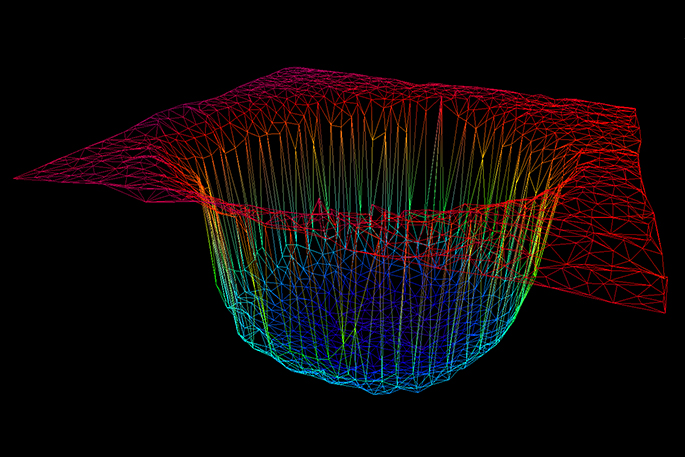Initial results of a survey of Lake Rotorua undertaken by the New Zealand Defence Force shows the lake is hydrothermally active.
The bathymetric and magnetic survey being conducted by the Royal New Zealand Navy's Littoral Warfare Unit and began on October 17, has so far covered about 40 per cent of the lake's floor.
Once the survey is completed on November 18, the results will provide GNS Science with a high-resolution map of Lake Rotorua's floor and geological features.
Leading the operation is Lieutenant Commander Tim Garvan who says they've found significant evidence of hydrothermal activity throughout the lake.
'This includes pockmarks on the lake floor and hydrothermal vents, with streams of bubbles seen in the water column.”
GNS Science Marine geologist Cornel de Ronde explains pockmarks indicate gas is being discharged through the lake floor, while hydrothermal vents show the release of gas and hot water.
Examples of hydrothermal activity seen on the lake floor include smaller hydrothermal eruption craters that are likely expelling hot water, and pockmarks or circular features several metres in diameter and are formed as a result of gas being discharged through the lake floor.
'Many of them appear in a linear pattern, suggesting they may be related to underlying faults.
'The survey being conducted by the NZDF is valuable because it will provide us with a base map that shows areas of current and past hydrothermal activity, the location of hydrothermal eruption craters and the distribution of volcanic rocks within the lake.
Cornel says the survey will also show areas of acute shoaling, which are potentially hazardous to vessels and sailors.
'This work is the first step in a series of surveys that we hope will ultimately determine how much heat is being discharged through the lake floor from an underlying magma source, with the results feeding into our long-term hazards assessment of the area.”
Lake Rotorua formed within a large caldera volcano that last erupted 240,000 years ago. It was last surveyed in 2005 by the University of Waikato.
 A graphic of one of the vent holes found on the lake floor of Lake Rotorua by a New Zealand Defence Force survey team. The vent hole is 60 metres wide and six metres deep. Image: NZDF
A graphic of one of the vent holes found on the lake floor of Lake Rotorua by a New Zealand Defence Force survey team. The vent hole is 60 metres wide and six metres deep. Image: NZDF



1 comment
Compared
Posted on 12-11-2016 17:43 | By Capt_Kaveman
to the rest of the world NZ is in a very quite stage and one or many could blow at anytime
Leave a Comment
You must be logged in to make a comment.